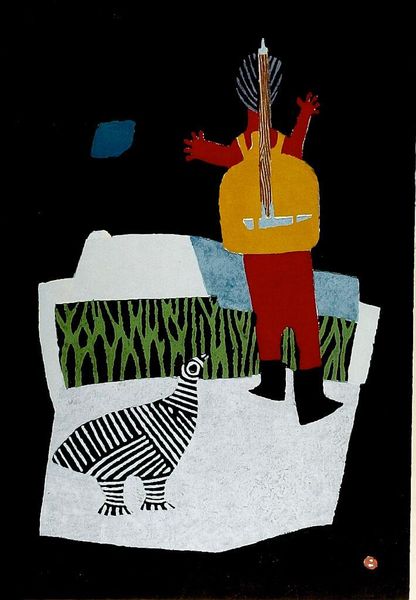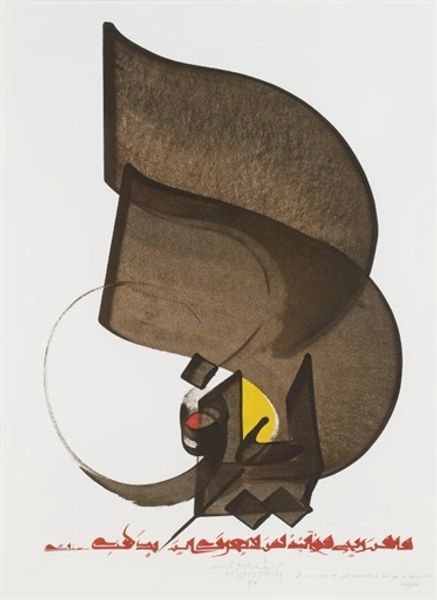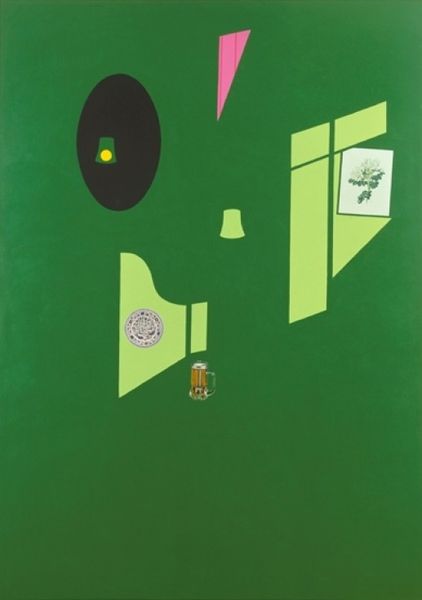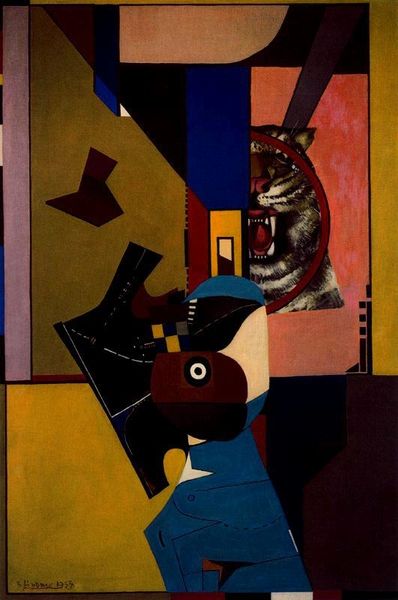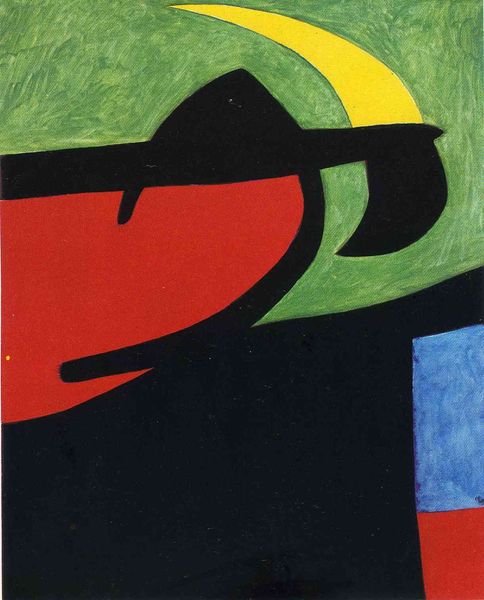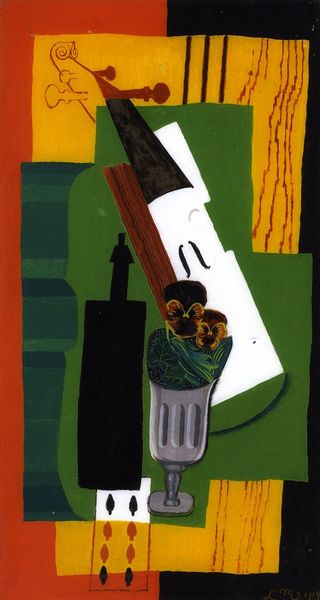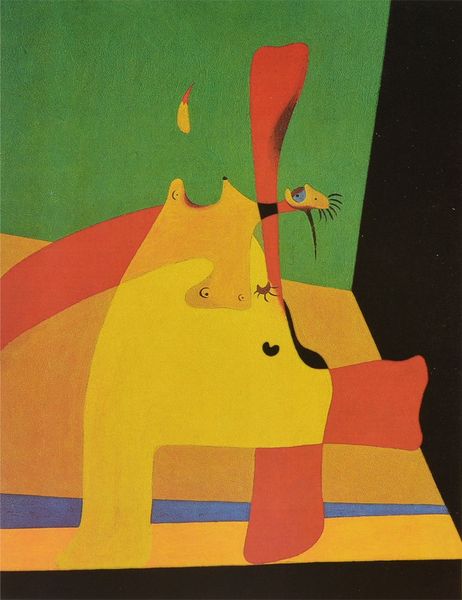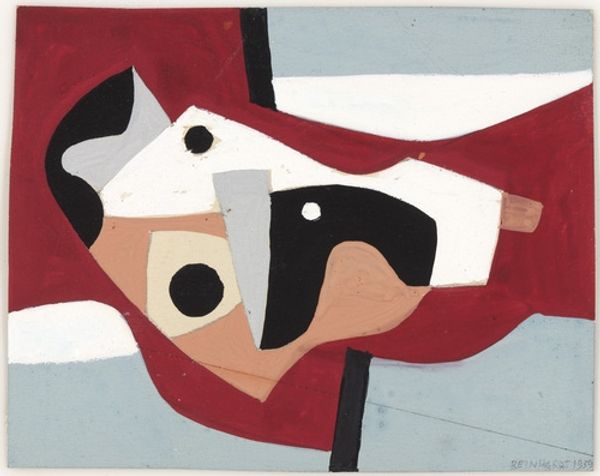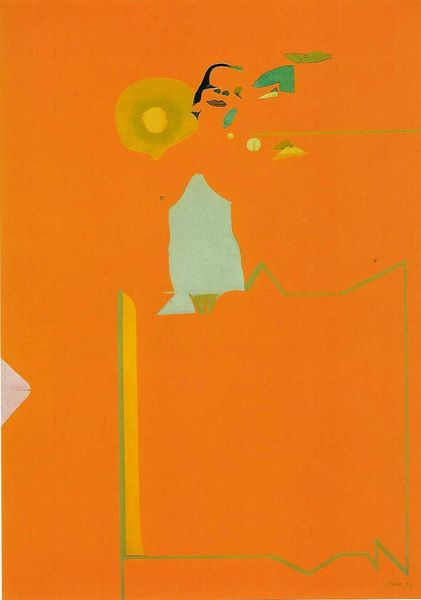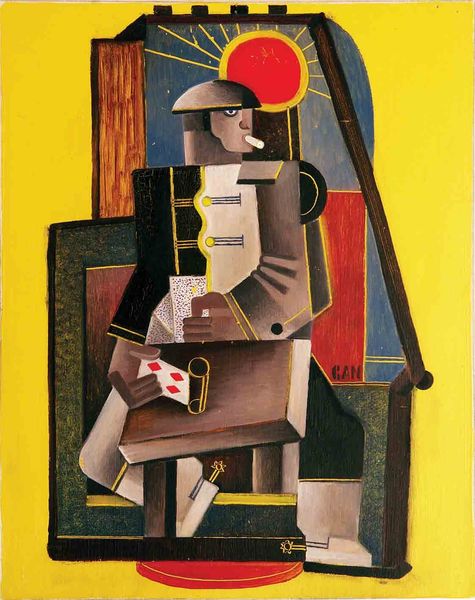
painting, acrylic-paint
#
painting
#
acrylic-paint
#
figuration
#
cityscape
#
modernism
#
hard-edge-painting
Copyright: Patrick Caulfield,Fair Use
Curator: Standing before us is Patrick Caulfield's “Hemingway Never Ate Here,” a painting from 1999. Editor: My first impression is that it feels austere, almost stage-like, with that flattened perspective. There's a distinct contrast between the hard edges and that dark, rather imposing bull's head mounted on the wall. Curator: Caulfield's art often engages with this tension between the ordinary and the symbolic. That bull's head is intriguing, as bulls appear as recurring motifs across cultures representing power and virility, here oddly juxtaposed within what seems like a simplified interior. Do you sense an intended irony? Editor: Perhaps. Caulfield was clearly fascinated with the material culture of everyday life, but he deconstructed it, didn’t he? The acrylic paint, thinly applied, allows those blocks of color to remain independent, denying any illusionism. Look how the table and items are rendered in a much more conventional style to really amplify the modern abstraction nearby. It questions notions of value—challenging the preciousness often associated with painting. Curator: Precisely. Even the title pulls us in, "Hemingway Never Ate Here." Why this denial? The painting is a dialogue between what is represented, and the symbolic weight these images carry over time. The bull’s head itself evokes literary bravado, and a sense of existential dread, against the mundane implication of the room itself. Editor: And those dark shadows hint at how restaurants are places for both intimate and transactional exchanges. Caulfield draws our attention to the construction of these kinds of constructed environments, and our interactions with objects within them. Curator: The formal elements underscore the themes as you mentioned, from the choice of hues, the bold yellow against that forest green, as though a signifier of memory in art deco colors! This combination feels both inviting and unsettling. Editor: Caulfield offers not a solid depiction, but an interplay. What Hemingway did or did not do becomes secondary to Caulfield's manipulation of materials, space, and symbols. Curator: Ultimately, Caulfield's painting challenges our interpretation to reveal the layers within an otherwise familiar experience of time and place, by presenting a stage to perform these meditations. Editor: Yes. This is more than meets the eye on this minimalist rendering. A powerful commentary on experience and meaning in modern life, as distilled through its artful fabrication.
Comments
No comments
Be the first to comment and join the conversation on the ultimate creative platform.
